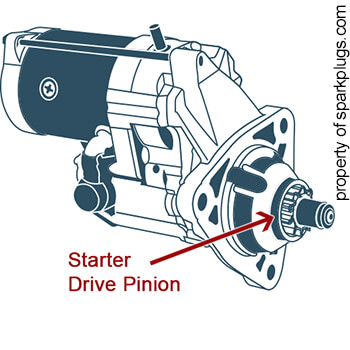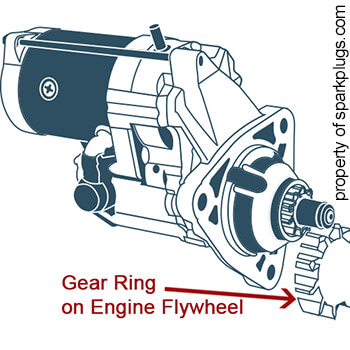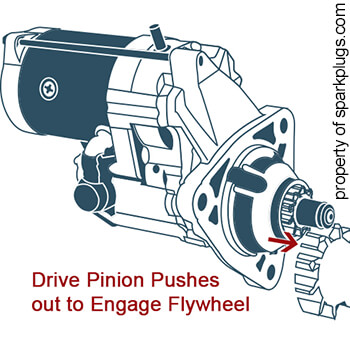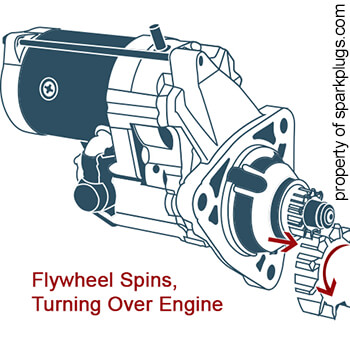How Does a Starter Work?
The starter is a rather small, cylindrical device usually found on the lower part of each engine, where the block meets the transmission. When engaged by the ignition key (or push button ignition), current from the battery activates the starter solenoid, which controls the starter. The starter houses a rod with a pinion gear attached, which is just out of reach of the gear portion of the engine’s flywheel.


With the starter solenoid engaged, a lever pushes the rod out so the pinion gear will meet with the flywheel gear.


The starter motor is then able to spin the engine over to activate its running sequence (crankshaft turns, pistons go up and down, air/fuel mixture is released into each cylinder, spark plugs fire, etc.).
As soon as the engine is started, the starter has completed its job. Upon release of the key, the starter drive disengages from the flywheel, back to its protected position where it cools down and prepares for the next time it’s called upon.
